#DynamicToneMapping
Explore tagged Tumblr posts
Text
LG OLED vs Samsung Neo QLED TVs 2021 Review
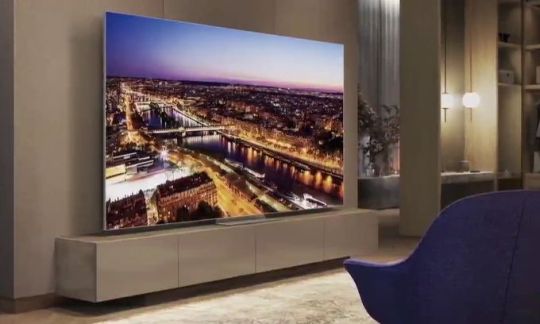
The heated debate about pros & cons LCD vs OLED technology has been going on for many years. However, they were quite academic in nature, since LCD & OLED TVs were in different price segments. But LG's efforts to reduce the OLED panel price and the progress of LCD TVs manufacturers to improve picture quality (QLED + Local Dimming with Mini LED backlit) are dramatically changing the situation.
OLED vs LCD 2021
This year, models based on these technologies are for the first time in the same price segment, sharply exacerbating the discussion. This year, models based on these technologies have mixed in the same price segment, which sharply exacerbates the discussion. In the segment from $ 2,000 to $ 3,000, the market today offers five quite comparable in price and quality TVs from the industry leaders. This list includes: - LG OLED 65CX (2020) - $ 2,000; - Samsung Neo QLED 65QN85A (2021) - $ 2,200; - LG OLED 65C1 - $ 2,500; - Samsung Neo QLED 65QN90A - $ 2,600; - LG OLED 65G1 - $ 3,000. Differences within the lines: - unlike the new C1 & G1 with webOS 6.0, last year's LG CX has webOS 5.0 version, does not have new Magic Remote, and uses the α9 Gen 3 AI Processor 4K, which is inferior to the more performance α9 Gen 4; - LG 65G1 - the first and only model today with an innovative OLED Evo panel, the brightness of which is increased to 1,000 nit. New Evo OLED panels use an additional third green emitter layer.
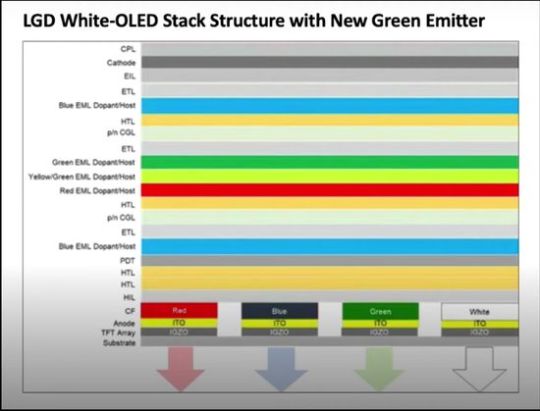
Evo OLED panel Combined with red and yellow-green, this structure extends panel color gamut. Moreover, DuPont makes blue emitters from the more productive deuterium instead of hydrogen. Its improved performance allowed designers to increase panel brightness at the same amperage and, accordingly, without reducing panel life due to overheating; - flagship Samsung 65QN90A uses a brighter VA panel with very high contrast ratio, QN85A uses ADS (Advanced Super Dimension Switch) panel with wider viewing angles, which is an improved IPS matrix. A short introduction with main key features of modern TVs will help you more objectively assess the prospects for this year's potential bestsellers.
OLED & Micro LED panels
About five years ago, the evolution of TVs split into two directions. LG and Sony have focused on developing innovative OLED technology that uses self-emissive pixels and therefore does not require backlit. This eliminated the problem of imperfect blacks due to partial transmission of light through the matrix in transmissive LCD panels. The fantastic contrast has become the main advantage of this technology.
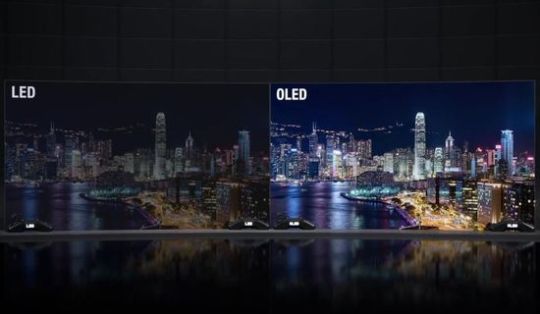
OLED vs LCD contrast But it provides relatively low brightness, which has become one of the main cons of OLED panels. Of course, its key features also include wide viewing angles, reduced panel thickness, limited range of panel sizes, disproportionate price increases for large panels, limited blue pixel life due to burn-in, etc. But the importance of these aspects is constantly decreasing. On the one hand, manufacturers of OLED panels successfully expand the range of sizes, lower prices and extending their lifespan. On the other hand, LCD panel manufacturers have also been successful in increasing viewing angles and reducing panel thickness. In fact, only excellent contrast at low brightness remain the main differences between the technologies. As known, the contrast directly affects the image quality, and peak brightness - HDR performance. In addition, the brightness is necessary to compensate for ambient lighting, for example, daylight. Samsung is also pedantically develops Micro LED technology based on self-emitting diodes without backlit. But the company chose a different path. Samsung develops Micro LED modules, which are then assembled into huge panels using magnets. At CES 2019, Samsung even showed 13-inch modules for such panels.
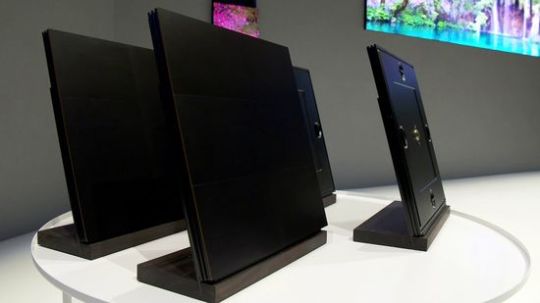
Samsung Micro LED modul This technology delivers amazing quality, but at an incredible price. For example, the 109-inch Samsung Micro LED panel at CES 2021 is worth more than $ 150,000.

Samsung Micro LED panel CES 2021
Quantum Dot technology & Local Dimming with Mini LED backlit
Of course, the LCD TVs developers weren't wasting their time either. Having developed a huge number of innovative technologies, the companies have brought LCD TV image quality very close to the level of OLED technology. Of course, QD technology and Local Dimming with Mini LED backlit dominate this list. The elegant solution of the South Korean developers gives aesthetic pleasure. As known, only sunlight provides perfect white, but conventional LEDs cannot. After a little thought, the developers decided to create an analogue of a small sun in a TV, synthesizing it from blue, green and red. This technology works as follows. Blue from blue LEDs passes through a matrix with nanoparticles, the size of which corresponds to the wavelengths of red and green. Then, the partially passed through the film blue is combined with re-reflected green and red, and they form a high-quality white, which is used to form the pixel colors.

Quantum Dots technology This technology has dramatically improved the picture quality of LCD TVs.
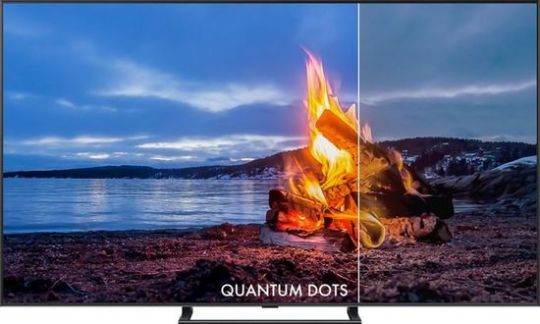
Quantum Dots image quality Companies today have developed and are using several versions of this technology, including Samsung QLED, Sony Triluminos, LG NanoCell, Hisense ULED, etc. The Mini LED backlit has significantly increased contrast by dramatically improving local dimming performance. By grouping a huge number of miniature LEDs into arrays, the developers have dramatically increased the number of independently controlled Local Dimming zones. For example, in March TCL announced a fantastic 85-inches TCL X12 8K Mini LED Starlight with 96,000 LEDs. In comparison, the legendary TCL 6-Series Roku TV (2018) used only 86 local dimming zones. As a result, the difference in price and image quality between OLED and LCD with QD technology and Mini LED backlit has practically disappeared.
LG OLED G1 TV
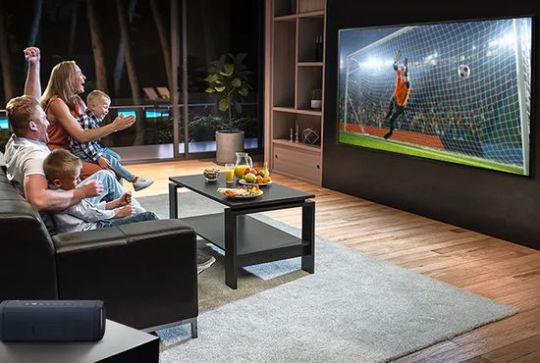
LG OLED G1 Today LG OLED G1 TV is positioned as one of the best OLED 4K TVs. The innovative bright Evo panel harmoniously complements traditionally stunning contrast of this OLED TV. The excellent webOS 6.0 with new interface, expanded Magic Explorer, enhanced LG ThinQ AI and Next Pick function is an added bonus. Finally, 4 HDMI 2.1 inputs, amazing upscaling with new α9 Gen 4 AI processor 4K, and great gaming with 4K@120Hz support, Game Optimizer, G-SYNC, FreeSync, VRR and ALLM complement its pros. Perhaps only glare due to the reflective glass surface in daylight and the absence of HDR10+ can be positioned as a small cons. On the other hand, $ 3,000 will partly offset its pros compared to other members.
Samsung Neo QLED QN90A

Samsung Neo QLED QN90A Of course, Mini LED backlit is a main feature of the new series. Tens of thousands of miniature LEDs, united in thousands of local dimming zones controlled by Samsung Quantum Matrix system, radically increase the overall image contrast by precisely adjusting the brightness in each frame fragment.

Samsung Quantum Matrix technology Moreover, the QN90A with VA panel is very bright. In particular, Dynamic Picture Mode in SDR with Standard Color Tone provides almost 1,790 nits (cd / m²) in the 10% window. But, of course, these settings slightly reduce image accuracy. The unprecedented brightness for HDR content reaches 1,600 nits, and even 1,800 nits for small bright peaks. Native contrast ratio is 3500: 1, but locall dimming increases it to around 26000: 1. The anti-glare screen perfectly suppresses reflections. The OTS+ system and 4.2.2 configuration provide a surround sound. As known, this sistem generates sound from the entire screen surface, synchronizing it with the source in the frame. The very high brightness, excellent black levels and QD technology provide very accurate color reproduction with rich colors in all brightness ranges. High native contrast ratio, exellent Mini LED FALD and wide viewing angles complement its pros. Finally, good Pre Calibration out of the box, Tizen OS with MultiView (up to 4 sources), USB camera, Smart Things, Samsung DeX and Game Bar round out the shortlist of its pros. Of course, the TV supports 4K@120Hz. But unfortunately for gamers, the model does not support the G-SYNC.
LG OLED C1
In fact, the LG OLED C1 is almost identical to the G1, but without the innovative bright Evo panel and the new built-in Next-Gen (ATSC 3.0) tuner. It also has four HDMI 2.1 ports, gorgeous new webOS 6.0, supports Dolby Vision IQ to automatically adjust brightness based on ambient lighting sensor, and all modern gaming features, inciuding HDR 4K@120Hz, VVR in Nvidia G-Sync & AMD FreeSync Premium, etc. Input lag in Standard and Boost modes does not exceed 9.4 ms. But its brightness is inferior to the G1. At its brightest Vivid mode, it shows no more than 900 nits for HDR in a 10% white window. But in general, the model provides traditionally excellent image quality and gaming performance. Like all LG TVs, it doesn't support HDR10+. As known, the company fundamentally prefers to use the Dynamic Tone Mapping mode, which actually converts HDR (High Dynamic Range) to LDR (Low Dynamic Range) to match content with model capabilities. Of course, this transformation is accompanied by losses, but it mimics our vision very effectively. Simplified, these algorithms divide all image brightness values into three levels (dark, medium, and bright), estimate the brightness of the midtones, correct the overall brightness, and redistribute the their values between pixels in the scene (dark pixels are brightened, light pixels are darkened). Then, the algorithms reduce the brightest pixels to the panel's specs. Image demonstrates their performance.
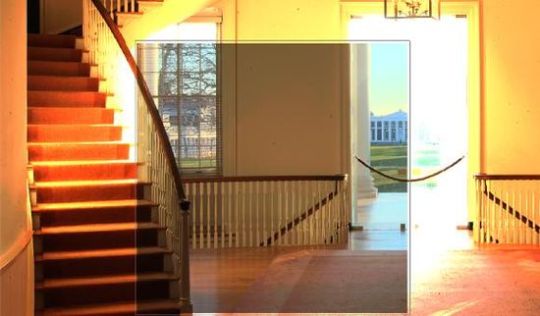
Dynamic Tone Mapping operation principle Dynamic Tone Mapping is used for the central fragment, along the edges - conventional HDR-LDR conversion. Overall, this feature is quite effective.

LG TV Dynamic Tone Mapping
LG OLED CX
The C1 is positioned as an improved version of CX. But the differences between them are minimal. They are almost identical in design.
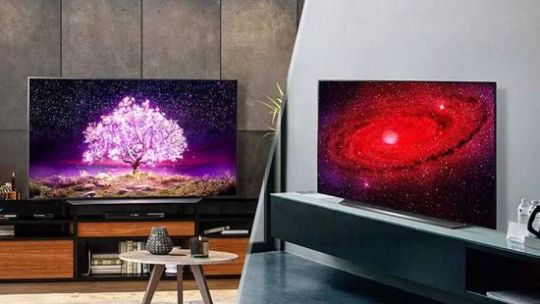
LG C1 vs CX design CX uses the last year's Magic Remote, α9 Gen 3 AI instead of the new α9 Gen 4 AI Processor 4K, and webOS 5.0 instead of the new webOS 6.0 in LG TVs 2021. Peak brightness for HDR format reaches 740 nits, the gamut coverage is 96% for DCI-P3, and 71% of Rec. 2020. Traditionally, TV provides amazing contrast and very accurate colors. The internet offers a huge number of reviews for this model, which are backed up by over 4,000 rave reviews on Amazon over several months of sales. Many experts rightly position the LG CX as the best OLED TV 2020 in terms of value for money. With a high probability, it claims to retain its place among this year's bestsellers also.
Samsung Neo QLED QN85A

Samsung QN85A Samsung QN85A is the second model in the new flagship Samsung Neo QLED line with innovative Mini LED backlit. In SDR, the TV's peak brightness reaches 1,125 nits in a 10% white window, which is more than enough to suppress glare in almost any ambient light. In HDR mode the maximum brightness reaches 1,250 nits with the maximum brightness and contrast settings in the "Movie HDR" mode (local dimming - "High", Color Tone - "Warm-2"). Moreover, “High” in Contrast Enhancer and max in ST.2084 even more boosts HDR brightness. The QN85A uses an ADS (Advanced Super Dimension Switch) panel with wide viewing angles. Unfortunately, its native contrast is 1370: 1, or 2000: 1 with local dimming. Wide color gamut is one of the pros of the new Neo QLED series. In particular, QN90A covers around 95% of color space, QN85A - 91% in DCI-P3 "xy". For DCI-P3 "uv" color space these values are 95% and 94%, respectively (adopted in 1976, "uv" chromaticity diagram takes into account sensitivity of human vision). Of course, these values are more than enough for HDR content in DCI-P3 color space. The model successfully copes with the processing of HDR content with 10 bit depth, smoothly reproducing shades without color gradients. Additionally, activating the “Noise Reduction” function almost completely eliminates possible banding in green and red shades. Unfortunately, it lowers the detail. Like the QN90A, TV has a new Game Bar feature. Its activation requires to hold Play / Pause button on remote. It shows on / off VRR mode and useful additional games info. Most importantly, Game Bar provides Super Ultra Wide Game View at 21: 9 or 32: 9 of screen ratio.

Samsung Game Bar The QN85A has one HDMI 2.1 and three HDMI 2.0 ports.
Conclusion
Of course, 65-inch $ 3,000 LG OLED G1 with innovative bright Evo panel objectively wins in this TV segment. Amazing contrast, wide color gamut, impeccable color accuracy, excellent (for OLED panel) brightness up to 1,000 nits, great new webOS 6.0, and a wide range of virtually all modern gaming features are compelling arguments in its favor. With a sufficient budget, it will be the best choice this year. Without a doubt, Sony Bravia XR A90J OLED 4K is also great, but the cost of the 65-inch model from this series reaches $ 3,800. Taking into account the minimal price difference, choosing in pairs between Samsung Neo QLED 65QN85A ($ 2,200) vs LG OLED 65CX ($ 2,000, 2020), and Samsung Neo QLED 65QN90A ($ 2,600) vs LG OLED 65C1 ($ 2,500) is more complex and ambiguous. Of course, LG OLED 65C1 is a great TV and no doubt it will compete successfully on the market. But unprecedentedly bright Samsung Neo QLED 65QN90A with excellent contrast due to innovative Mini LED backlit, and with premium specs is more than a serious competitor. With a price difference of only $ 100, its pros seem more convincing. In the budget part of our list, the Samsung Neo QLED QN85A and LG OLED CX are roughly the same. But the $ 200 difference, the expected price reduction for the LG OLED CX (2020), and most importantly, the huge amount of rave reviews give it the best marketing prospects. In general, the competition is doing its job, providing the consumer market with excellent models in all price segments. Of course, the abundance of gorgeous models often makes the choice difficult, but these chores are pleasant.
P.S.
Before posting, I accidentally found a video with information on numerous faults of new Samsung's Neo QLED TVs (total panel failure, flickering LED's, hardware faults, etc). Of course, this could be dishonest marketing or completely natural flaws in the new technology. But, in any case, this video can be useful when choosing. Read the full article
#AdvancedSuperDimensionSwitchpanel#DynamicToneMapping#GameOptimizer#LGOLEDC1#LGOLEDCX#LGOLEDG1#LGOLEDvsSamsungNeoQLED#MicroLEDpanel#MiniLEDbacklit#OLEDEvopanel#QuantumDottechnology#SamsungGameBar#SamsungNeoQLEDQN85A#SamsungNeoQLEDQN90A#SonyBraviaXRA90J#SuperUltraWideGameView#TCLX128KMiniLEDStarlight#webOS6.0
0 notes
Text
LG 4K OLED CX TVs 2020 Review

As known, OLED (organic light-emitting diode) technology uses the diode's own radiation and provides "infinite" contrast due to the lack of LED-backlight. Simplistically, the signal absence at the corresponding diode provides absolutely black. In LED TV the light from the backlight partially passes onto the screen, providing only grayscale. But high price and relatively low brightness of OLED models limit their dominance over traditional LCD LED technology. In addition, QLED, NanoCell, FALD (full-array local dimming), and other innovations have dramatically improved the picture quality of LED TVs, sharpening competition between technologies. Moreover, Samsung's success in developing hybrid QD-OLED, QD-MicroLED and QDEL technologies may conclude this discourse in favor of a third hybrid solution. Maybe that's why LG is simultaneously developing OLED and NanoCell technologies. But today OLED continues to dominate the premium segment of LG TVs. This year, the company has unveiled several 4K OLED series. The CX series aroused particular interest from experts, because it's positioned as a continuation of the legendary C9 series, which is rightfully considered the best OLED TV of 2019. Traditionally for OLED technology, the LG CX OLED uses an ultra thin design up to 1.8 inches thick. The TV is installed with included table-top stand or wall mounted using a standard VESA 300 x 200 bracket. In addition, the CX has four HDMI 2.1 ports. The Read the full article
#AIAcousticTuning#CinemaClearmode#DolbyVisionIQ#DynamicToneMapping#HDRGamingInterestGroup#HGiG#LG4KOLED55CXPUATV#LG4KOLED65CXPUATV#LG4KOLED77CXPUATV#LG4KOLEDCXTVs#OLEDMotionPro#SportsAlertfeature
0 notes
Text
LG projectors Review

Of course, this south korean giant does not require the introduction. Today, models under this brand successfully compete in almost all segments of consumer electronics, including robotic vacuums, smartphones, dishwashers, etc. In addition, LG holds an undisputed leadership in the OLED TVs segment. In general, a high innovative level and a systematic approach most fully characterize the company's strategy.
Introduction
High-tech projectors are no exception. Given the prospects, LG initially positioned its projectors as a competitor to TVs. As known, modern projectors already win in terms of diagonal size, but significantly lose in usability. Installation of a traditional projector requires placement in the center of the room or on the ceiling, and, accordingly, cabling. UST (ultra short throw) models are installed almost close to the screen, radically simplifying this problem. For example, the LG PF 1000 U provides projection from 60 to 150 inches at a distance of 4 to 15 inches. To date, the company has developed a series of popular UST projectors, starting with LG PF 1000.

In addition, wireless connectivity eliminates the problem of laying cable for signal. The large dimensions, requirements for a darkened room and high noise are also traditional cons of projectors. As known, the image quality, including its contrast, directly depends on the ambient light. For example, low-power LED pico projectors with brightness up to 100 Lm usually provide acceptable contrast on the screen up to 50-60 inches only in a carefully darkened room. Of course, this significantly reduces its usability. Powerful models provide brightness from 2000 lm and higher, eliminating this problem. But they usually use high-power lamps as a light source. Unfortunately, these lamps require intensive cooling due to high temperature. Usually, companies cool them with the help of powerful fan. But heat removal requires a sufficiently large internal volume. Therefore, powerful lamp projectors are large in size and weight. In addition, the fan noise can reach 50 dB, reducing the perception when viewing. Moreover, the service life of such lamps rarely exceeds 5000-6000 hours.
LG projectors
LG models use LEDs or lasers as a light source. Unfortunately, lasers are relatively expensive, but they provide higher image quality and have many other pros. Of course, the company develops models of almost all types, including the portable PH30N, LED projectors with huge longevity up to 30,000 hours, etc. Many of them get very high marks. For example, many experts called the portable 4K UHD HU80KA CineBeam projector the best Home Theater Projectors of 2018.

Moreover, it remains one of the most popular in its class. But the powerful UST (ultra short throw) 4K UHD laser projectors are of particular interest. These models are today the closest competitors for traditional TVs. High image quality, simple and convenient installation near the screen, a huge projection size, make many consumers seriously think when choosing between a TV and a projector. Perhaps today only the price helps TVs to maintain their position. Of course, LG did not stand aside from this process by offering the exellent HU85LA projector in 2019.
LG HU85LA UST 4K UHD laser projector
LG introduced the HU85LA UST 4K UHD laser smart Home Theater Cinebeam projector at CES 2019, where it was an Innovation Award winner. Its strict minimalistic design is in perfect harmony with almost any interior.

Of course, model has an integral streaming platform, a built-in sound system, Alexa built-in, Thinq AI, and the Google Assistant. Initially, its price reached $ 6,000, but today it has dropped to $ 5,500. In comparison, Sony offers models of this class for about $ 10,000 (VPLVW695ES) and even $ 25,000 (VPLVW885ES). In addition, Hisense offers the 100L10E for about $ 10,000. In fairness, today the market also offers cheaper models in this segment, including Optoma P1 (about $ 3,500), VAVA VA-LT002 (about $ 2,500), LED ViewSonic X1000-4K (about $ 1,500), etc. The brightness of the HU85LA reaches 2,700 ANSI Lm, providing high contrast for a 120-inch diagonal image size even with high ambient light. A UST fixed lens with a projection ratio of 0.19 produces a 120-inch projection at a distance of 7.2 inches from the screen, a 100-inch - from a distance of 3.9 inches, or a 90-inch image - from 2.2 inches. 12-point keystone / warp adjustment effectively solves the problem of image setting.

As known, it's especially difficult for UST models due to the extreme angle at which light leaves the lens.
Main technologies
The HU85LA uses DLP XPR chip of unspecified size, providing 4K UHD (3840 x 2160 or 8.3 million pixels) resolution with the pixel-shifting technology.

In addition, the Dynamic Contrast Ratio of the projector reaches 2,000,000: 1. The light engine uses a 3-channel laser design without color wheel. According to the company, its service life reaches 20,000 hours. Three channel laser technology with the addition of a red laser light source to a typical blue laser, supports wider color coverage up to 12-bit.

Moreover, the addition of a red laser allowed developers to implement the innovative Wheel-Less technology. In fact, it eliminates color loss compared to conventional technologies that use a color-wheel to reflect colors from one color light.

Frame interpolation with LG's TruMotion technology effectively ensures smooth playback in highly dynamic scenes.

LG's Dynamic Tone Mapping feature analyzes the content on a frame-by-frame basis, providing the optimal HDR on any given scene. In fact, it automatically adjusts HDR settings for different programs with different levels of brightness.

When recognizing an HDR10 signal, the HU85LA automatically uses specially-tuned picture presets. Unfortunately, the model does not support the 3D playback and HLG standard, whose popularity is growing recently. For SDR (standard dynamic range) HD content, the projector offers eight modes, including Vivid, Standard, Cinema, Sports, Game, Expert (Bright Room), Expert (Dark Room), and HDR Effect. Usually, modern models offer one or two HDR color modes. But the HU85LA uses Vivid, Standard, Game, Cinema and Cinema Home.
Other
Smart TV features are also top notch. The projector supports Netflix, Amazon Prime, Google Play Movies, Fandango, YouTube, and Spotify for music. In addition to the Google Assistant, the model uses LG's ThinQ technology. The projector also has a built-in digital TV tuner for direct connection of an antenna and supports screen sharing with Miracast, or from iOS or Android devices via LG's TV Plus app.

HU85LA uses a pair of on-board 5-watt stereo speakers. Unfortunately, they cannot provide much bass depth. Of course, the model has а Bluetooth input/output and optical audio output for outboard audio. In addition, one of the two HDMI ports is ARC-enabled. Network connection uses WiFi module or a wired RJ45 connection. Pros - very short 0.19 throw ratio provides a 90-inch image size from a distance of only 2.2 inches; - high brightness does not require a darkened room; - five HDR color modes; - high color accurate out-of-box; - extensive picture adjustments; - effective dynamic HDR10 tone-mapping. Cons - no HLG HDR compatibility; - no 3D; - SDR Expert, HDR Cinema and Cinema Home modes require additional calibration; - traditionally for UST projectors, rather complicated settings; - only the average level of the built-in audio system; - relatively high price.
Conclusions
Of course, the LG HU85LA is not the cheapest model among the powerful 4K UHD UST laser projectors as a replacement for traditional TV. On the other hand, it’s hard to even imagine the cost of a traditional 120-inch TV. Today, only Samsung offers MicroLED TVs with huge screens. For example, Samsung MicroLED The Wall series includes models with screen of 75, 88, 93, 110, 146, 150, 219 and 292 inches. But, of course, this direction is still only a prospect because of the huge price. Therefore, UST laser projectors today have no alternative as a solution to increase screen size with a reasonable budget. LG HU85LA is located approximately in the middle of the price range, between Optoma, VAVA, ViewSonic (up to $ 3,500), and Sony or Hisense (from $ 10,000 and above). But LG also traditionally provides great service for all of its consumer electronics. Of course, this factor is important for any expensive device. This video demonstrates the some capabilities of the LG 4K UHD Cinebeam HU85LA Projector. Read the full article
#DLPXPRchip#dynamicHDRtone-mapping#DynamicToneMapping#LGHU80KACineBeamprojector#LGHU85LA#LGPF1000#LGPH30N#LGprojectors#SamsungMicroLEDTVs#TruMotiontechnology#UltraShortThrow#UST
0 notes
Text
What is Dolby Vision technology?

As known, Dolby Vision was originally developed as a powerful cinematic technology for 4K video format, which later transformed into a professional and a consumer brand. Dolby Vision was created by Dolby Labs as a premium HDR video format with extended color space.

HDR history
This technology has become the logical outcome of the rapid development of digital technology. The rapid development of technology has allowed engineers to create matrix with a very short time to switch the screen cells. Of course, fast matrices required faster control, stimulating the introduction of 10-bit control instead of 8-bit control. In addition, the OLED matrix initially had almost instantaneous switching and used 10-bit and 12-bit control circuits. The television used broadcast of television signals with 8 bits. But effective FALD backlight (Full Array Local Dimming) and the emergence of OLED-matrix allowed companies to increase the screen brightness from 500 nits and above. However, even 4K TVs initially provided an increase only in the number of displayed pixels while maintaining 8-bit (256 colors) display of video signal brightness gradations. Unfortunately, 8-bit control did not effectively use an extended dynamic range of brightness. Thus, the improved TVs of the new generation could not use their advanced capabilities due to the limitations of the broadcast standard and video content. Of course, this problem required a solution. As a result, in 2012, Dolby Labs offered an elegant solution to this problem by increasing the dynamic range of the image brightness up to 12 bits using the HDR Dolby Vision system that it developed. Respectively, Dolby Vision became the first format for HDR. In the future, many companies began to work on their own alternative solutions. But, of course, this direction was unpromising due to the lack of unification. Therefore, many segment leaders, including LG, Samsung, Sharp, Sony and Vizio, joined forces to create an open HDR standard. In April 2016, UHD Alliance industrial group, including LG, Samsung, Sony, Panasonic, Dolby, etc, announced the adoption of Ultra HD Premium certification for UHD Blu-ray players.
HDR features
As known, HDR technology provides a sharp increase in image saturation due to the expansion of color gamut and contrast.

In turn, the solution to this problem was made possible on OLED TVs due to the lack of LED backlighting or by using FALD (Full Array Local Dimming), which provides brightness control for individual arrays of pixels. As a result, the saturation of the image in HDR format significantly exceeds traditional formats.

Thus, viewing HDR content requires 4K OLED TV or a 4K model with FALD-backlit. In addition, HDR technology requires HDR content, the creation and broadcast of which has features. Any modern video content contains static metadata, which is necessary, for example, for adjusting the screen when mastering in the process of color correction. They do not change throughout the entire broadcast and are therefore called static. Virtually all existing HDMI standards support this format. But, playback of content only with static matadata does not ensure the preservation of the original director's color solution for each scene. Therefore, Dolby Vision uses dynamic metadata. This more complex technology solves the problem. Initially, content creators set the required brightness and contrast for each scene. Then, they generate a set of metadata and combine them with content for frame-by-frame transmission. Thus, each scene contains its own metadata. This unique technology provides the most accurate color rendition.

Video content transfer
HDR technology is currently divided into HDR10 - open source (UHD Alliance) and Dolby Vision, developed by Dolby Labs. Respectively, the HDR10 standard allows manufacturers to make changes to the source code. For example, Samsung and Amazon Video jointly developed the new HDR10 + standard, adding the support for Dynamic Tone Mapping to the HDR10.

HDR10 and Dolby Vision use the PQ ("Perceptual Quantizer") transfer format. Dolby developed the EOTF (Electro-optical Transfer Function) technology, and SMPTE standardized it as an ST.2084 standard. As is known, SMPTE, along with DVB, ITU and ARIB, is one of the leaders in the segment of the HDR video specification and its standardization. HDR uses: - PQ without metadata (PQ10); - PQ with static metadata (ST.2086 standard); - dynamic metadata (ST.2094 standard); - PQ with an additional level from Dolby and Technicolor; - HLG from BBC and NHK, part of the ITU-R BT.2100 standard. HDR10 uses PQ with static metadata with updated HDMI 2.0a. Dolby Vision supports the first four modes, but most often uses dynamic metadata in a single-level or two-level configuration. Of course, the unified ST.2084 standard for Dolby Vision and HDR10 significantly expands the content selection, allowing studios to create HDR10 video content and expand it with dynamic metadata or additional levels for Dolby Vision. As known, dynamic metadata provides the most accurate color reproduction.
Dolby Vision configurations
Single-level Dolby Vision uses only the HDR version of the video stream. Two-level Dolby Vision additionally contains an SDR signal. Today, Dolby offers the technology of simultaneous transmission of SDR and HDR in one stream. In addition, the signal can use HEVC and AVC encoding. Of course, single-stream technology greatly simplifies content creation by providing a choice for transmitting the SDR signal. It can be sent simultaneously with the HDR by the second stream or into one two-level stream after the corresponding conversion of the entire broadcast in the transmitting encoder. In addition, the TV tuner can also convert HDR to SDR. Moreover, Dolby has developed a CMU (Content Mapping Unit) method that improves the color reproduction and detail of the converted SDR signal compared to its native version. Metadata is created and entered into the signal stream at the moment the transmission starts or right before the last encoder, but not during the transmission itself.
UHD Premium certification
UHD Alliance requirements for UHD Premium certification include sections on displays, content and distribution. For example, HDR playback requirements include black levels and peak brightness. Content must have certain black levels, maximum brightness and minimum color gamut no worse than DCI-3. Also, certification requires compliance with the SMPTE ST 2084 standard, which includes ST 2084 + ST 2086. It complies with Dolby Vision, HDR 10 or Technicolor / Philips. Thus, a particular TV can have the UHD Premium logo or the Dolby Vision logo, or both. This certification depends only on the technical characteristics of the TV.
Conclusion
In fact, the use of dynamic metadata was originally the main difference between HDR10 and Dolby Vision. Using only static metadata limits the ability to take into account the brightness of individual scenes. As a result, the playback of dark scenes in the HDR10 format darkens the frame, distorting the original color solution of the director and colorist.

The video at the end illustrates the differences between them. HDR10 + solves this problem by providing dynamic metadata for automatically adjusting the TV brightness for different scenes. Of course, today support for HDR is one of the important criteria for choosing a TV. This video demonstrates the differences between the HDR10 with static metadata and HDR10+ with dynamic metadata on two Samsung 88-inch QLED Tvs. However, Dolby Vision still leads in color and peak brightness through the use of 12-bit color. Read the full article
#ContentMappingUnit#DolbyVision#DolbyVisionlogo#dynamicmetadata#DynamicToneMapping#HDR10#ITU-RBT.2100#PerceptualQuantizer#PQ10#SMPTEST2084#ST.2086standard#ST.2094standard#staticmetadata#UHDPremiumlogo
0 notes